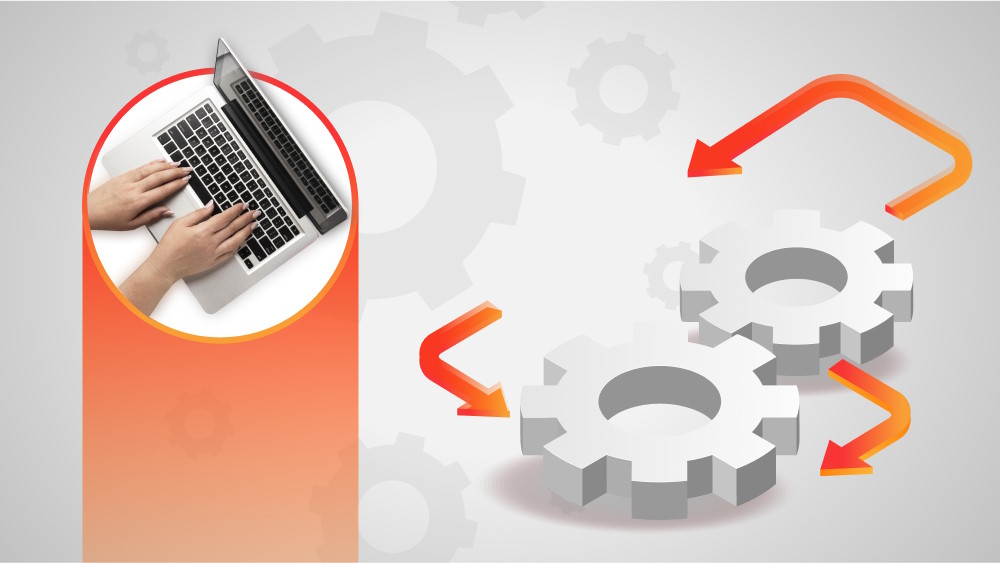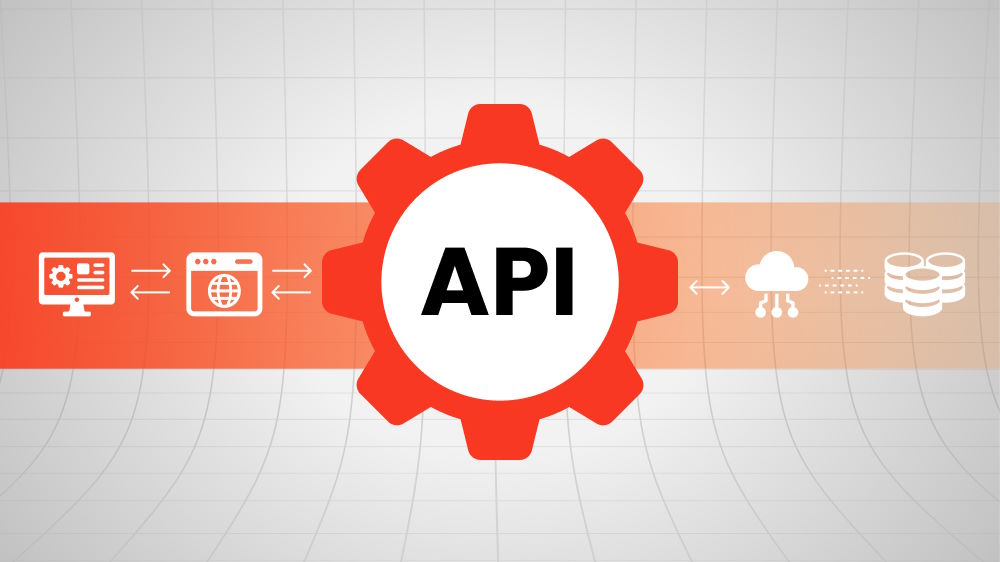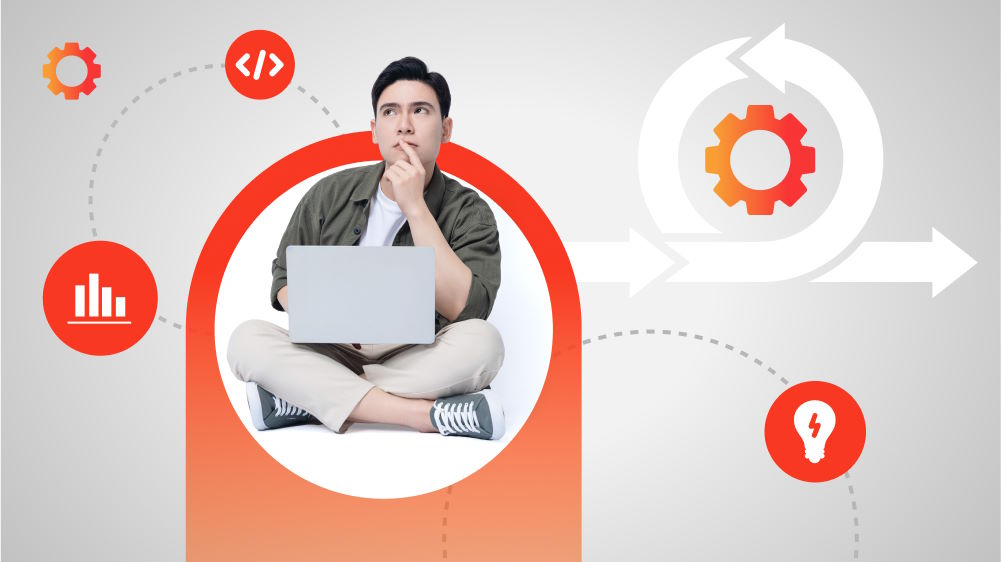A Quick Tour of Popular Software Development Methodologies
This list outlines the leading software development methodologies and gives you some clues on how to choose the right one for your project.

Content Map
More chaptersSoftware development methodologies are not buzzwords but technical necessities. Creating software without a defined methodology is like trying to build a house from scratch without a plan or launching a rocket without mission control. You might have a highly skilled team, modern tech stacks, and a visionary idea. Unfortunately, without a structure and rhythm, a project may be exposed to numerous risks and hidden issues that lead to failures. Delays, miscommunication, and technical debts are just a few examples.
On the other hand, a well-chosen software development methodology can set the tempo, help teams work in sync, stay organized, and proceed with shared goals and priorities. It helps to reduce confusion and speed up the entire software development life cycle (SDLC).

There are many different software development methodologies to choose from, and each offers a unique approach that caters to diverse project requirements, team dynamics, and risk profiles, which influences the overall project lifecycle and outcome.
Whether it is in-house development or outsourcing, picking the right method for your project requirements is imperative. In today’s article, we are going to take you on a quick tour of the common software development methodologies. Hopefully, this list will give you some clues on how to choose the right one for your software development projects. Let’s get started.
What Is a Software Development Methodology?
You can think of a software development methodology as a plan, a blueprint, or a structured, organized approach used in the creation of software. It dictates a set of processes, practices, and principles that guide how software is planned, built, tested, and delivered. A method breaks down the entire project into multiple manageable phases depending on the type of approach. It defines who does what and when (roles and responsibilities) to ensure both technical and business stakeholders stay aligned with the project goals and collaborate effectively.

With no jargon, a software development method is simply how to plan, manage, and execute a project. Its purpose is to navigate complexities in developing software and ensure resource allocation, team collaboration, and successful completion.
All the Most Popular Development Methodologies
There can be various types of software methodologies, but there will be one that best suits your project requirements, team maturity, and business context.
Waterfall
This is a traditional software development method. It follows a sequential and incremental development approach that breaks the entire software development process into non-overlapping stages. In the Waterfall model, one stage concludes before the next one starts. The flow progresses downward as its name suggests.
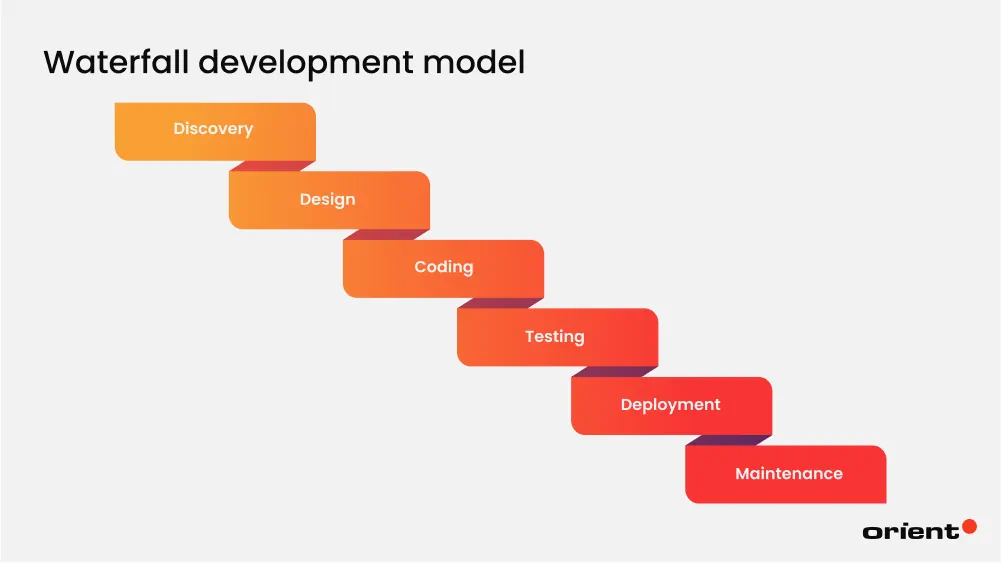
No alteration or extension to the project scope is allowed once the development process begins. Therefore, Waterfall development methodology works best for simple projects or those with static, well-defined requirements. The Waterfall methodology is simple to understand, manage, and document, so it is preferred by beginners and inexperienced developers.
First introduced in 1970, Waterfall development method has become one of the most well-known project management methodologies. Even though it is now considered a traditional approach due to its limited flexibility and adaptability compared to Agile methodologies, it remains foundational for many plan-driven teams and projects.
Agile
The opposite of a linear and sequential approach is the Agile software development methodology. Since its inception in 2001, Agile development methodology has been gaining traction as the best alternative to Waterfall and other rigid, inflexible methodologies.
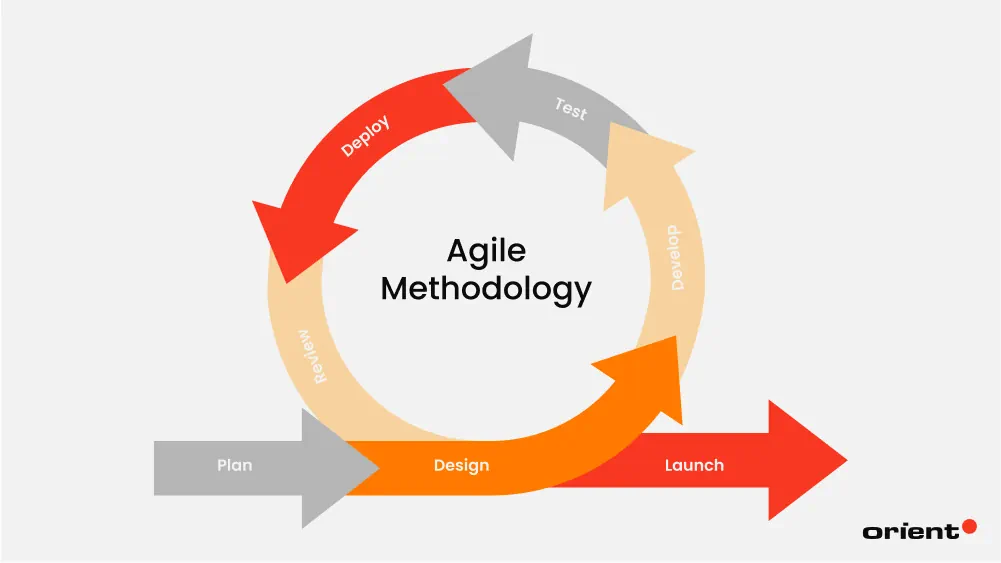
The core features of Agile consist of:
- Adaptive Planning: Agile offers responsiveness. It enables accommodating changing requirements easily. Agile teams can swiftly adapt to real-time changes or shifting priorities and update their plans based on customer feedback and testing outcomes.
- Iterative Development: Agile framework breaks the entire project into smaller, manageable units called sprints or iterations. Developers work on individual parts instead of the whole software, so they can test and evaluate progress regularly, rather waiting until the finished product. By revisiting the backlog, the team always knows what to do next and prioritizes the most valuable items.
- Incremental Delivery: A sprint or iteration lasts from one to four weeks, and each ends with a functional version of the project. In an iterative approach, stakeholders can witness real progress through increments, rather than waiting for the complete software system. It allows for a flexible response to changes.
- Stakeholder Involvement: Agile encourages collaborative efforts in the SDLC. Stakeholders, including customers, product owners, business representatives, etc., are involved to provide feedback throughout the project. It also creates opportunities for continuous improvement as issues are identified early and addressed through iterative feedback loops.
With its benefits, Agile is trusted for complex projects - those with unclear or evolving requirements or under competitive pressure. For example, building a new mobile application based on an emerging trend.
When mentioning Agile, we do not refer to one single way of working. It stands for an umbrella term covering the Agile Manifesto’s set of values and principles. There are variants that apply Agile principles. Each of them offers unique practices, development tools, and focus areas. Still, all promote flexibility, team collaboration, and continuous delivery. Here are other Agile methodologies:
Scrum
The Scrum methodology emphasizes collaboration and encourages cross-functional teams to work together in order to complete tasks. The process is based on time-boxed cycles (sprints), and each lasts no longer than one month.
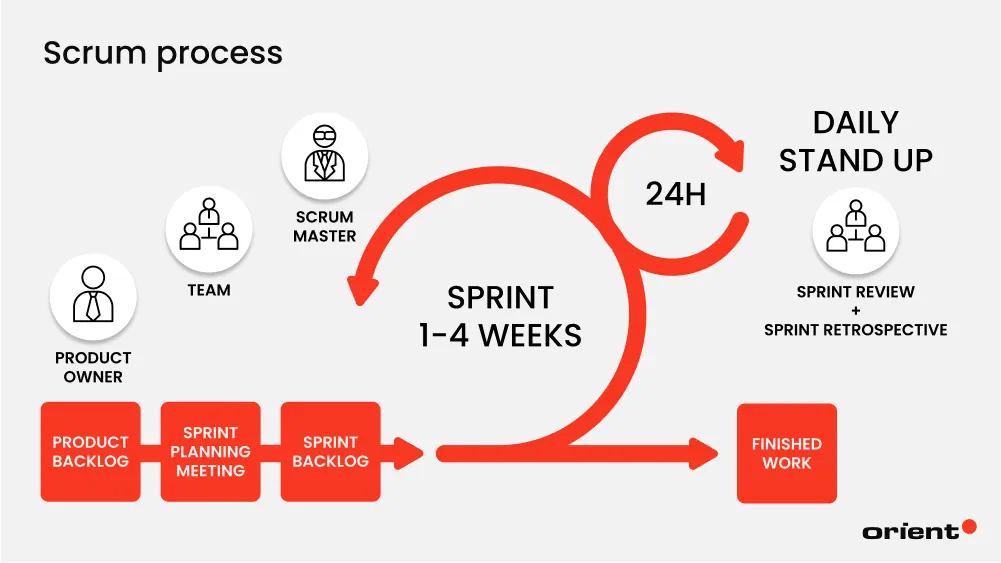
Scrum works in short, structured events and with defined roles:
Roles:
- Product Owners: Represent the brand voice to ensure value is delivered to customers and users. They manage the product backlog and decide what to build next.
- Scrum Master: Act as a coach to keep the team on the right track. The Scrum master provides advice and helps remove blockers, ensuring practices are followed. They are not leaders or managers but facilitators who serve the Scrum team.
- Development Team: Include cross-functional professionals (Developers, testers, UI/UX designers, etc.) responsible for project execution. They are self-organized - no micromanagement.
Events:
- Sprint Planning: Set goals and plan for the next 1 - 4 weeks. Held at the beginning of each sprint.
- Daily Stand-ups: A 15-minute meeting to catch up with what the team did yesterday and what to do today.
- Sprint Reviews: A demo section happens at the end of each sprint. The team presents the completed work to other stakeholders and collects feedback for the next sprints.
- Retrospectives: A private meeting to reflect on how the sprint went, how the team performed, and how to improve in the next sprint.
Scrum is ideal for product development teams that require structure, routine delivery, and close collaboration.
Kanban
Kanban is known as an agile and lean management methodology. In this approach, there will be no sprinting. Instead, Kanban visualizes the workflow into a board of three columns: To Do, In Progress, and Done.
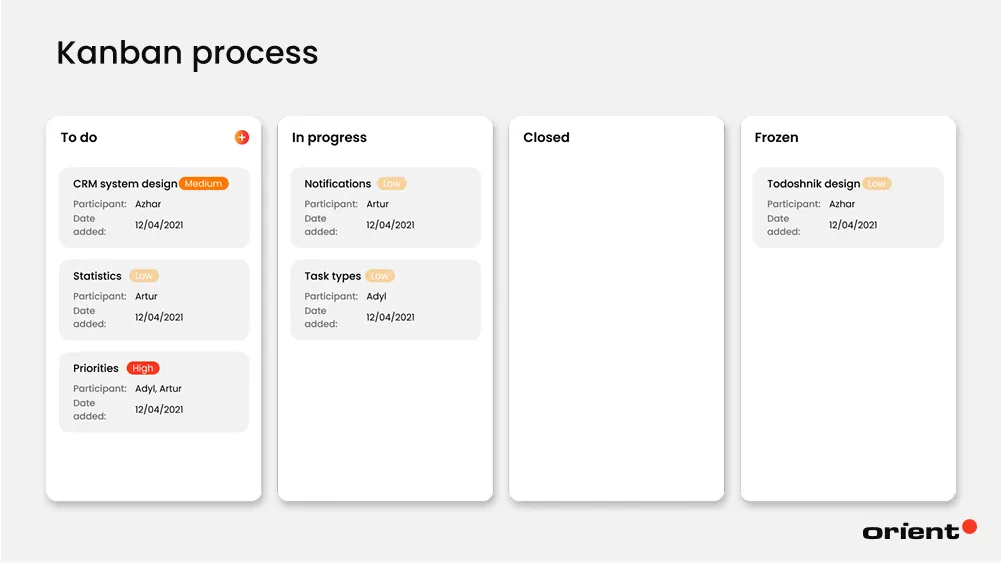
Work items move continuously through this system. The key principle is to limit work-in-progress (WIP). The development team can reduce multitasking and avoid bottlenecks in the software development lifecycle. The development teams can set a cap on how many tasks they handle at once, reducing multitasking and bottlenecks in the development lifecycle. Kanban is pretty popular among teams that deal with unpredictable work and frequent changes in priorities.
Extreme Programming (XP)
XP or Extreme Programming methodologies focus on code quality, rapid iteration, and continuous feedback. The core practices of XP include:
- Pair Programming: Two developers or teams collaborate to complete one task. The goal is to create high-quality code quickly and efficiently.
- Test-Driven Development (TDD): Write tests before code.
- Frequent Releases: Code is tested and delivered in small increments multiple times a day. This ensures fast feedback and rapid value delivery.
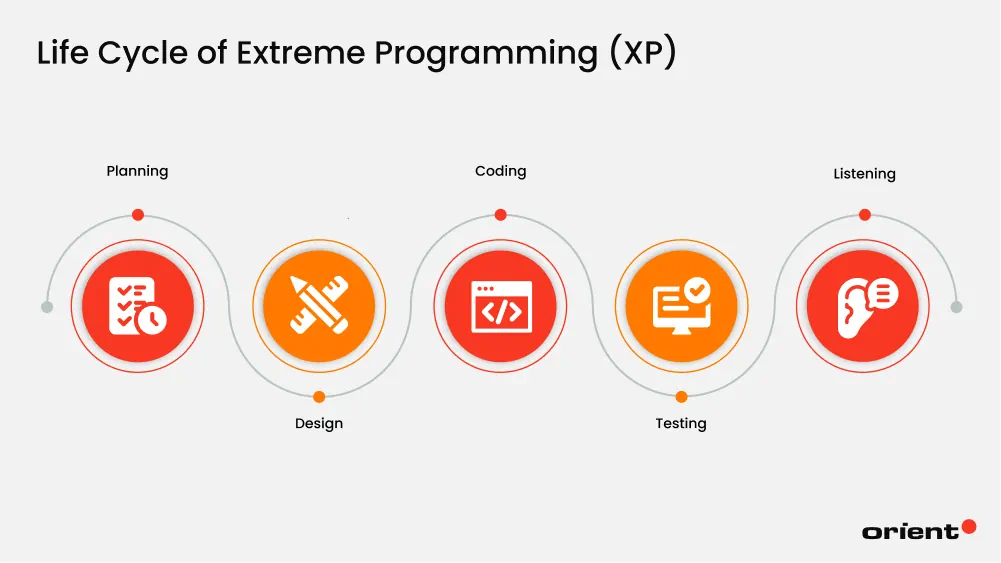
You should consider using XP’s iterative approach for highly technical projects that have rapidly changing requirements, active customer involvement, and frequent feedback.
Lean Software Development
Abbreviated as LSD, the Lean method is an Agile variant derived from the lean manufacturing principles that focus on maximizing value and minimizing wasteful time and resources in software engineering. The logic of Lean is quite similar to the Minimum Viable Product (MVP) strategy, as both aim to deliver fast, learn early, and avoid waste (E.g., unnecessary features, delays, handoffs, etc.).
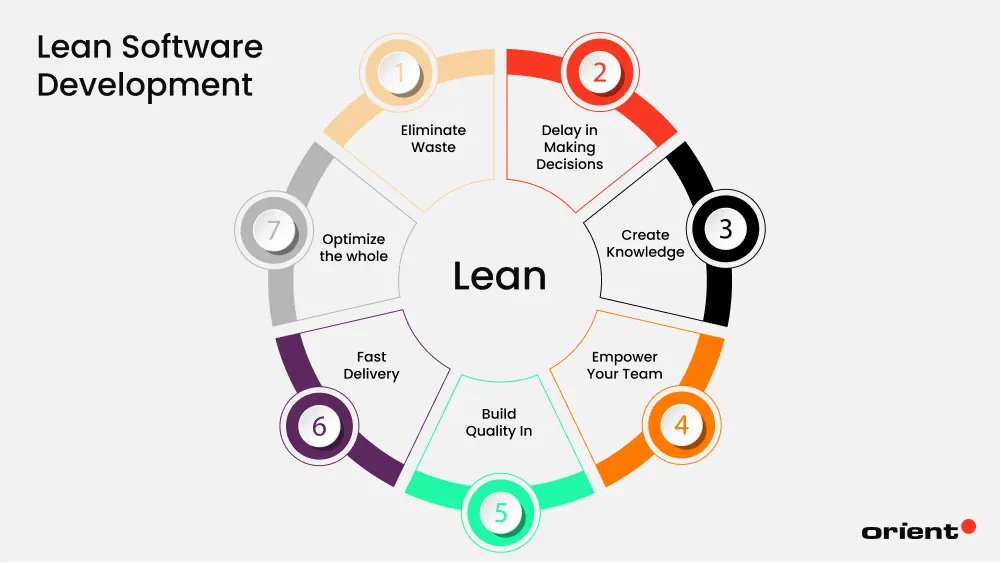
With the Lean approach, software developers follow these core principles:
- Quality comes first, and only build what adds value.
- Streamline processes and remove bottlenecks or anything that does not bring value to the end-users, reducing cycle time and speeding up delivery.
- Smaller, faster releases mean quicker feedback and value delivery.
- Encourage teams to self-organize, innovate, and take ownership.
- Make decisions at the right time not too early in order to avoid speculation and risks of rework or misguided investment.
- Focus on the entire value stream and improve the whole system.
Lean’s nature makes it suitable for fast-paced or resource-constrained environments where efficiency and quick value are key to success. This method also works well for projects that embrace continuous improvement and team empowerment.
DevOps
DevOps is known as a cultural shift and a powerful, modern software development approach. It emphasizes cross-team empowerment, collaboration, and communication between development and operations teams. The core idea is to create a culture and workflow where building, testing, releasing, and maintaining software is faster, more reliable, and more scalable.
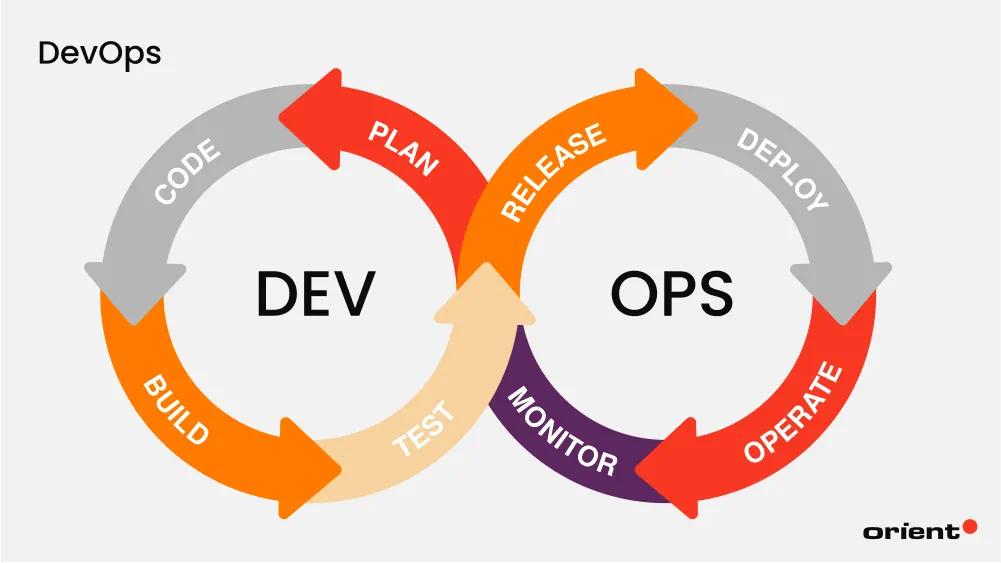
The key principles of DevOps include:
- Collaboration: Break down silos and merge development and operations teams into a continuous delivery pipeline that automates and integrates the entire software lifecycle.
- Automation: Automate repetitive and error-prone tasks for better speed and consistency.
- Continuous Integration & Continuous Delivery (CI/CD): Integrate and deliver code changes to production quickly through automated pipelines.
- Monitoring & Feedback Loops: Collect real-time performance data to inform decisions.
- Infrastructure as Code (IaC): Manage and provision infrastructure (E.g., servers, networks, etc.) through code for consistency, repeatability, and version control.
- Security Integration (DevSecOps): Embed security into the DevOps lifecycle from the outset instead of treating it as a final gate. DevSecOps highlights security and compliance.
If your team is practicing Agile methodologies and often requires frequent releases, DevOps can be the right software development methodology. DevOps is also ideal for projects that require rapid scaling, high availability, and real-time updates or organizations that shift from manual operations to automated, data-driven processes.
Spiral
Introduced by Barry Boehm in 1986, the Spiral methodology combines the features of both the Waterfall and Agile models. Due to this fusion, it provides a systematic and iterative approach that emphasizes repetitive refinement through a circle made of loops.
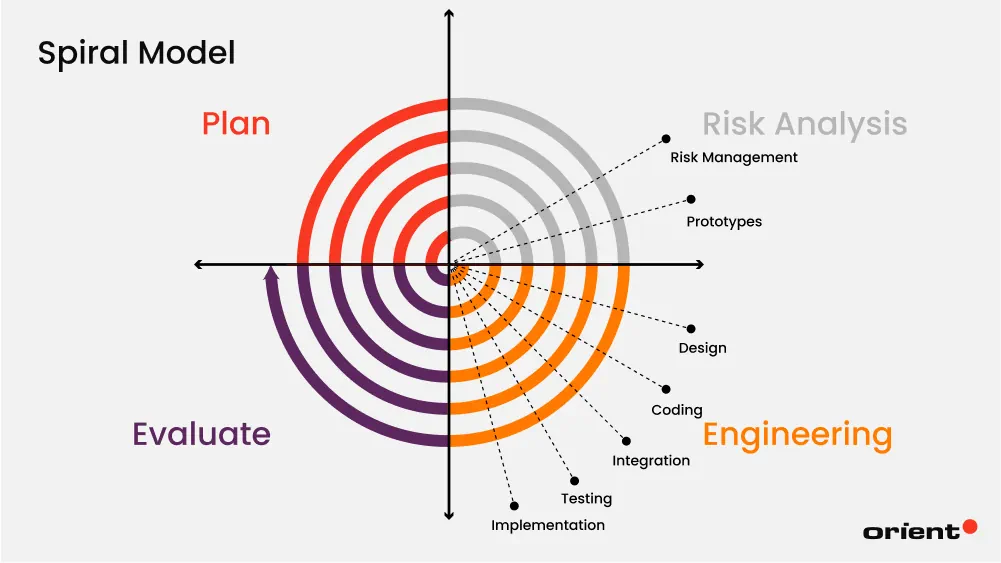
Each spiral loop represents a development cycle, and the software development team goes through four phases in each:
- Planning: Define objectives, gather requirements, and identify constraints.
- Risk Analysis: Identify and assess risks (technical, operational, cost, etc.).
- Engineering: Design, develop, and test part of the product.
- Evaluation: Review progress and provide feedback.
Spiral is designed for risk management, so it best suits large, complicated, and high-risk projects.
Rapid Application Development (RAD)
RAD or rapid application development methodology approaches software development with an priority on quick prototyping and fast user feedback. In simpler terms, RAD enables developers to build a prototype or MVP of the application in order to gain real feedback and insights into clients’ requirements and then iterate accordingly. The prototype methodology helps boost the development speed while ensuring high responsiveness to user needs and changes.
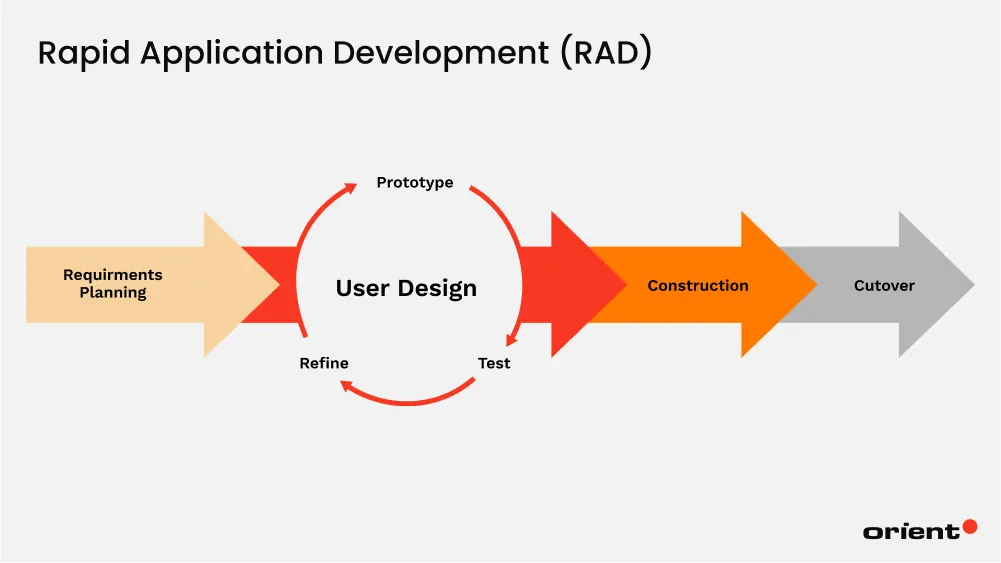
The RAD method typically adheres to four key phases:
- Requirement Planning: This is a short, focused phase where stakeholders, users, and developers collaborate to define high-level goals and scope.
- User Design: Developers and users work closely to create prototypes (Like interactive mockups or early versions of the final product).
- Rapid Construction: Build the final product using component-based, modular development, often with automated tools to speed up coding and testing.
- Cutover/Deployment: Final testing, data conversion, and deployment take place. The software is released into production, with ongoing improvements if necessary.
Unlike other software development methodologies, especially traditional ones, RAD allows for simultaneous development and refinement. So, it is a valuable choice for time-sensitive projects or those where user feedback is available early and often. Teams that use low-code or no-code platforms should consider RAD as well.
Feature-Driven Development
Based on Agile principles, the feature-driven development method focuses on iterative delivery through short, structured phases. As its name implies, FDD organizes the work around features and places an emphasis on design before development. In this model, the development team starts by creating a feature list and then goes on to develop the software in small increments.
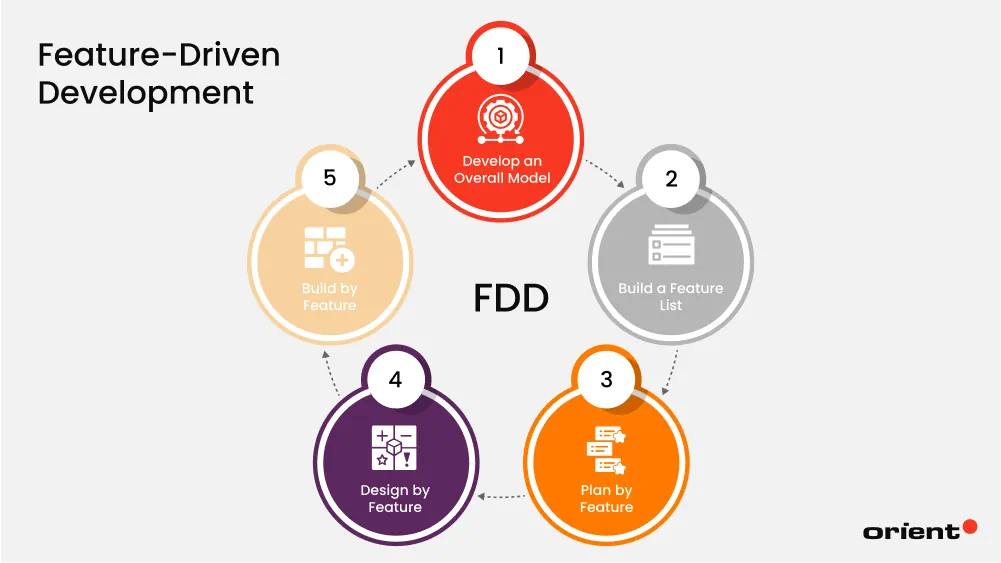
Five basic steps of the feature-driven development methodology:
- Develop an Overall Model: Define the model based on a high-level understanding of the business domain and needs. The main purpose is to create a shared vision of the product’s structure and how different parts within the system interact with each other.
- Build a Feature List: Identify all the functional pieces the system needs and consolidate them into small, meaningful features. Assemble a list and group these features into logical areas.
- Plan by Feature: After listing features, the team decides the priority for each based on business value, complexity, and technical dependencies.
- Design by Feature: Perform a detailed design session for each feature. During this, the team reviews the overall model, breaks down the feature into components, and produces sequence diagrams and class design details. This way, the features will fit into the system’s architecture and business rules before coding.
- Build by Feature: Once the design is approved, each feature is developed, tested, and integrated into the existing codebase at a time, allowing for incremental delivery.
As FDD brings structure and clarity, it works best for projects with complex domains or large teams.
Joint Application Development (JAD)
This is a collaborative approach that involves all key stakeholders in software design and development through a series of facilitated workshops, often called JAD sessions, where participants discuss to define business needs, system features, and solutions. Instead of relying solely on conventional methods like documentation or interviews, JAD helps foster real-time collaboration and consensus-building for more accurate requirement gathering.
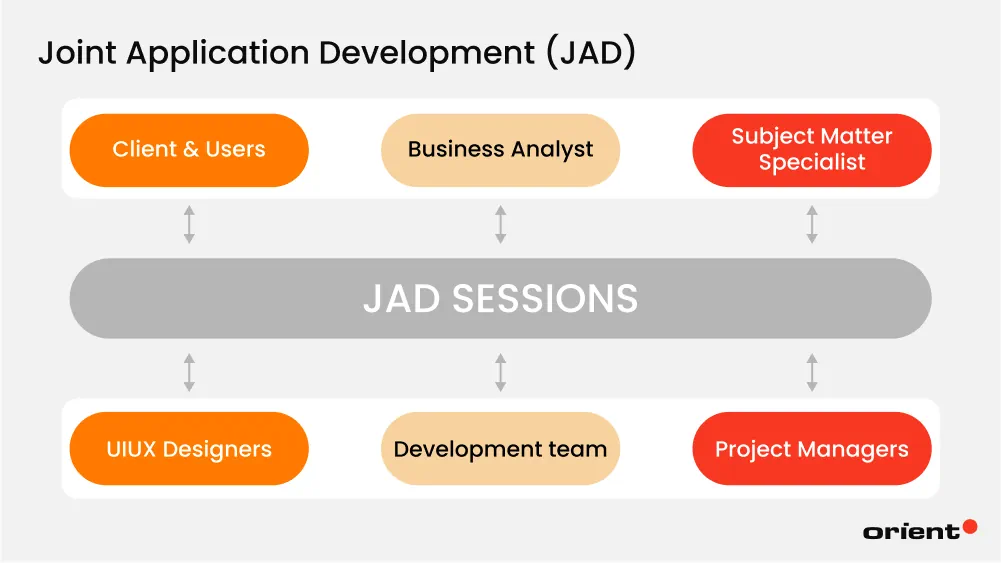
How JAD works:
- Preparation: Select participants, define goals, and prepare supporting materials.
- Workshop Sessions: Conduct structured meetings (typically lasting 1 - 5 days). Stakeholders collaborate to discuss requirements, business processes, and constraints using visuals (E.g., whiteboards and mockups).
- Documentation: A recorder documents all input and decisions as a formal summary for validation and approval.
- Review & Follow-up: Conduct a follow-up review to address unresolved issues and confirm alignment before development begins
Usually, the Joint Application Development method is used in the early stages of a project. It helps to accelerate the planning and analysis phase of the SDLC and reduce risks of misunderstanding between technical teams and other stakeholders.
Rational Unified Process
Developed by Rational Software (acquired by IBM) in the 1990s, RUP is a heavy-structured method that focuses on delivering high-quality, well-documented software through disciplined phases, rigorous planning, and consecutive revisions.
Similar to Waterfall, RUP follows a defined sequence of phases, from planning to deployment. However, RUP allows you to go through multiple development cycles within each phase and revisit or refine requirements, architecture, or features based on feedback. With the risk-driven approach, RUP encourages the teams to detect and address any potential threats early on instead of delaying them like Waterfall does.
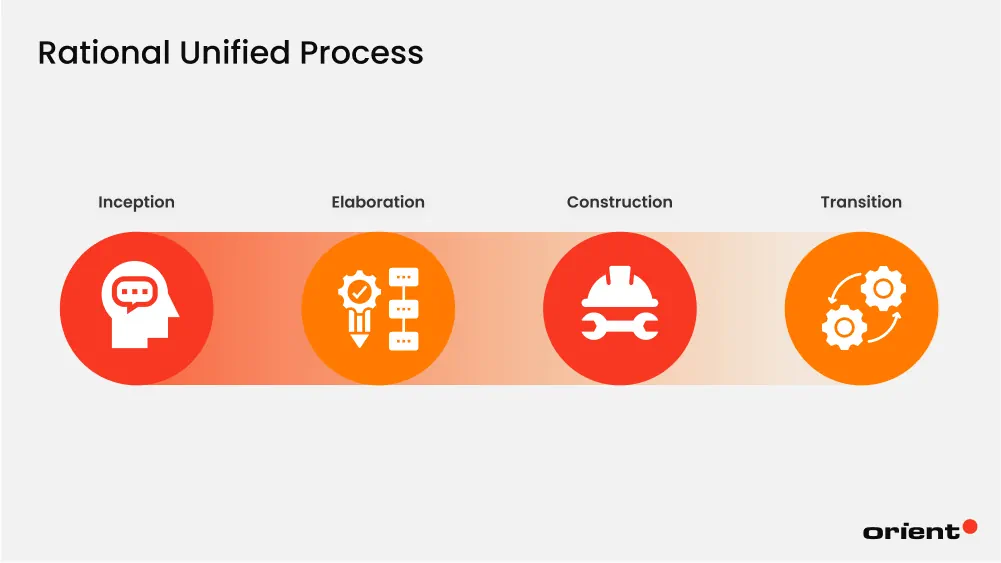
The Rational Unified Process divides into four sequential phases:
- Inception: Define the project’s vision, scope, key requirements, cost, timeline, and business case. The ultimate goal is to determine if the idea is feasible and worth pursuing.
- Elaboration: Refine requirements, solidify the system architecture, and identify and address major risks. This phase ensures the project is well-planned before heavy development begins.
- Construction: The actual development work of working software happens here. Build components, integrate features, and conduct testing.
- Transition: Deploy the system to users, perform final testing and adjustments, provide training, and ensure the software is fully operational in its real-world environment.
RUP is designed to support large, complex systems, making it one of the best software development approaches for enterprise-grade projects.
Last Notes
Now that we have run through a series of software development methodologies, these are widely adopted ones. However, there is no universal “best” method, but the strategic one that suits your project’s details the most. Considering key factors, such as requirements, team size, skills, timeline, budget, and objectives, is the key to an informed decision.
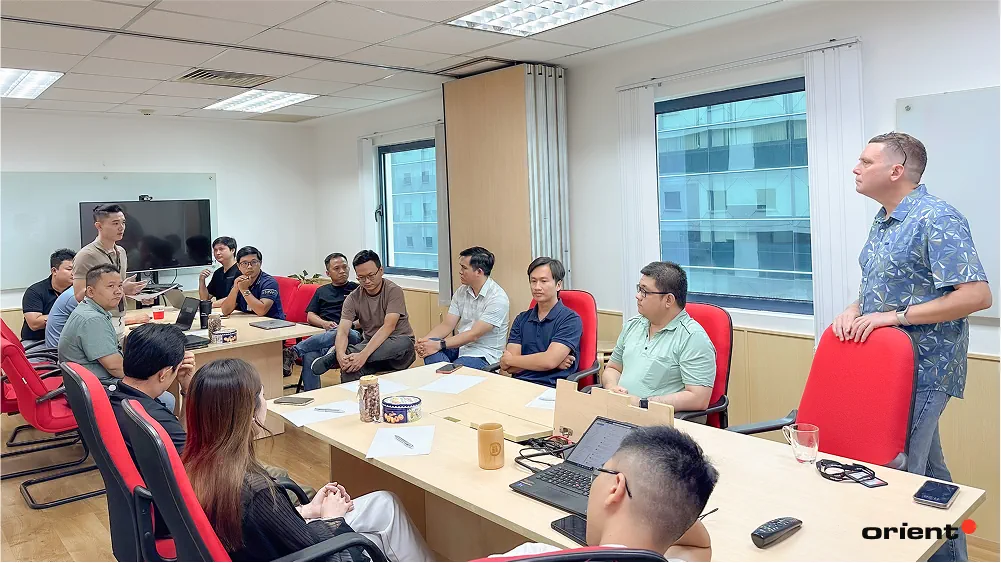
If you are unsure which approach to take for your next project or require technical support from experts, reach out to Orient Software. We are a professional service provider with 20 years of experience in the software development industry. As a reliable partner, we not only provide IT consulting and technical support but also staffing solutions and custom software development services. At Orient, we have a team of highly skilled developers, experts, and tech talent to help with your needs. Tell us about your project, and our consultants will get back to you within three business days.

